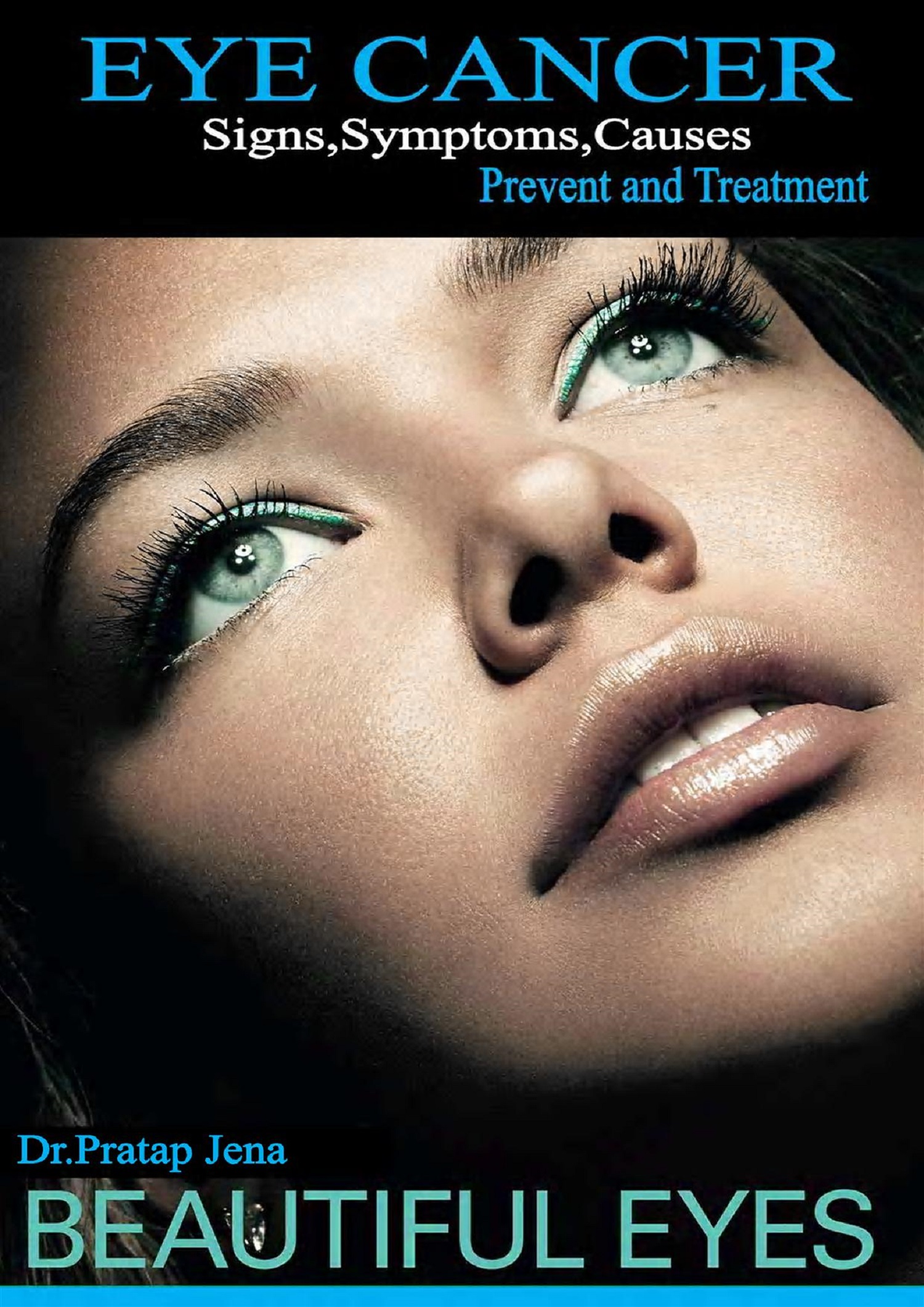
Eye Cancer Signs,Symptoms,Causes,Prevent and Treatment
On Sale
$3.00
$3.00
What is ocular melanoma? (cancer of the eye)
As per the American Academy of Ophthalmology, OM is the most common essential cancer of the eye in adults. The cancer develops in the cells that produce the eye's pigment. It can likewise develop on the conjunctiva, the bodily fluid layer that spread the eye and line the eyelid.
Most eye melanomas develop in a part of the eye you can't see. The early stages of the cancer infrequently cause any signs or symptoms. That's why you might not have the option to spot this type of melanoma the manner in which you might a spot or surprising mole on your skin.
However, people may spot cautioning indications of the cancer as it develops. Symptoms of OM incorporate blurry or distorted vision, a vulnerable side in your vision, seeing "blazing" lights, or a dull spot in your field of vision.
One cluster has been found among Auburn University graduated class.
Ocular melanoma, otherwise called uveal melanoma, is an exceptionally uncommon type of cancer. Every year, just 2,500 people — or about 5 out of 1 million — get a diagnosis with this type of eye cancer.
That statistic is exactly why two communities — Huntersville, North Carolina, and Auburn, Alabama — are such oddities. Both towns are associated with a high number of ocular melanoma (OM) cases. Researchers want to know why.
"We see patients from everywhere throughout the country and a few patients from outside of the country. Certainly if we have patients who know one another or who lived and experienced childhood in a similar town, that has been somewhat of a warning for us in trying to make sense of if there's something else going on," said Dr. Marlana Orloff, an oncologist at Thomas Jefferson University Hospital in Philadelphia who has practical experience in the treatment and study of OM.
Take Auburn, for example. The town of 63,000 people is in a state of just under 5 million people. It's home to one of Alabama's largest universities, Auburn University.
Thirty-three people with connections to the town or university have gotten conclusions of OM. The fundamental common thread between them is by all accounts that they all lived or worked in the town between 1980 and the early 1990s.
Huntersville, a community north of Charlotte, is slightly littler, with a population of almost 55,000. But 18 people who lived, worked, or spent substantial amounts of time in the town since 2000 have gotten judgments of OM.
As the quantity of cases continues to develop in these zones, so does the interest in people who've developed the cancer — and, maybe more importantly, what they all share for all intents and purpose.
As the cancer advances, you may notice that the state of your understudy changes. A dim spot or "spot" may develop on the iris.
"Sometimes it will get got on a routine eye exam. Other times, patients will have symptoms, often symptoms of a retinal detachment," Orloff said. "They go to an eye doctor, they get alluded to a retinal specialist, and after that ultimately to an ocular oncologist who makes the diagnosis."
Ocular Melanoma Foundation statistics identify 55 years of age as the middle age for an OM diagnosis.
Those two facts alone make the cases in Huntersville and Auburn even increasingly extraordinary.
In both towns, women have gotten analyze all the more frequently, Orloff says, and the majority of the people with OM have been younger, well below the middle age of a typical diagnosis.
Social networks spread awareness
In 2001, Allyson Allred, an Auburn University graduate living in Hoover, Alabama, got an OM diagnosis. A year earlier, she told AL.com, Allred was sent a prayer request for an Auburn alum — and a lady who had lived in a similar dorm as she amid their green bean and sophomore years at the school — who had been determined to have this equivalent uncommon cancer.
When Allred got her diagnosis, she contacted the lady, and they connected over the mutual diagnosis.
Eleven years later, in 2012, another lady with connections to Auburn and a similar dorm joined their circle.
While these three women reinforced and helped each other through the high points and low points of the disease, crosswise over town and unbeknownst to them, another Auburn alum was fighting his own OM battle.
Imprint McWilliams, a 1994 and 1995 graduate of Auburn University, got a diagnosis of OM in 2011 at the age of 38. The Birmingham, Alabama, architect started experiencing vision problems in his right eye and went for an exam. That's when his doctors discovered the cancer.
As per the American Academy of Ophthalmology, OM is the most common essential cancer of the eye in adults. The cancer develops in the cells that produce the eye's pigment. It can likewise develop on the conjunctiva, the bodily fluid layer that spread the eye and line the eyelid.
Most eye melanomas develop in a part of the eye you can't see. The early stages of the cancer infrequently cause any signs or symptoms. That's why you might not have the option to spot this type of melanoma the manner in which you might a spot or surprising mole on your skin.
However, people may spot cautioning indications of the cancer as it develops. Symptoms of OM incorporate blurry or distorted vision, a vulnerable side in your vision, seeing "blazing" lights, or a dull spot in your field of vision.
One cluster has been found among Auburn University graduated class.
Ocular melanoma, otherwise called uveal melanoma, is an exceptionally uncommon type of cancer. Every year, just 2,500 people — or about 5 out of 1 million — get a diagnosis with this type of eye cancer.
That statistic is exactly why two communities — Huntersville, North Carolina, and Auburn, Alabama — are such oddities. Both towns are associated with a high number of ocular melanoma (OM) cases. Researchers want to know why.
"We see patients from everywhere throughout the country and a few patients from outside of the country. Certainly if we have patients who know one another or who lived and experienced childhood in a similar town, that has been somewhat of a warning for us in trying to make sense of if there's something else going on," said Dr. Marlana Orloff, an oncologist at Thomas Jefferson University Hospital in Philadelphia who has practical experience in the treatment and study of OM.
Take Auburn, for example. The town of 63,000 people is in a state of just under 5 million people. It's home to one of Alabama's largest universities, Auburn University.
Thirty-three people with connections to the town or university have gotten conclusions of OM. The fundamental common thread between them is by all accounts that they all lived or worked in the town between 1980 and the early 1990s.
Huntersville, a community north of Charlotte, is slightly littler, with a population of almost 55,000. But 18 people who lived, worked, or spent substantial amounts of time in the town since 2000 have gotten judgments of OM.
As the quantity of cases continues to develop in these zones, so does the interest in people who've developed the cancer — and, maybe more importantly, what they all share for all intents and purpose.
As the cancer advances, you may notice that the state of your understudy changes. A dim spot or "spot" may develop on the iris.
"Sometimes it will get got on a routine eye exam. Other times, patients will have symptoms, often symptoms of a retinal detachment," Orloff said. "They go to an eye doctor, they get alluded to a retinal specialist, and after that ultimately to an ocular oncologist who makes the diagnosis."
Ocular Melanoma Foundation statistics identify 55 years of age as the middle age for an OM diagnosis.
Those two facts alone make the cases in Huntersville and Auburn even increasingly extraordinary.
In both towns, women have gotten analyze all the more frequently, Orloff says, and the majority of the people with OM have been younger, well below the middle age of a typical diagnosis.
Social networks spread awareness
In 2001, Allyson Allred, an Auburn University graduate living in Hoover, Alabama, got an OM diagnosis. A year earlier, she told AL.com, Allred was sent a prayer request for an Auburn alum — and a lady who had lived in a similar dorm as she amid their green bean and sophomore years at the school — who had been determined to have this equivalent uncommon cancer.
When Allred got her diagnosis, she contacted the lady, and they connected over the mutual diagnosis.
Eleven years later, in 2012, another lady with connections to Auburn and a similar dorm joined their circle.
While these three women reinforced and helped each other through the high points and low points of the disease, crosswise over town and unbeknownst to them, another Auburn alum was fighting his own OM battle.
Imprint McWilliams, a 1994 and 1995 graduate of Auburn University, got a diagnosis of OM in 2011 at the age of 38. The Birmingham, Alabama, architect started experiencing vision problems in his right eye and went for an exam. That's when his doctors discovered the cancer.

